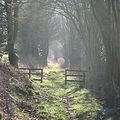To be or not to be: Is that really the question we need to ask ourselves?
- Debbie Innes

- Apr 13, 2018
- 3 min read
Updated: Jan 30, 2020

It can be quite a struggle at times, being. Ask anyone I’ve ever worked with before. They could tell you without a doubt that I’m a ‘do’-er'; I’m most comfortable when I have my list of things to do along with the time and space to get things done. So, it may not be surprising that, initially, I found mindfulness somewhat frustrating, as part of the point of it is to take one of out ‘doing’ mode and into ‘being’ mode. It’s actually the same with my yoga class – but that does have the added benefit that while I’m ‘being’ (breathing into the stretch and noticing where I feel the posture), I’m also actually ‘doing’ (by doing the postures, I’m exercising). And that, for me, feels like a nice balance. A combination of doing and being that feels right.
But just being? Well, that’s a different story. From a very young age, most of us are taught to be ‘do’-ers'. ‘Clean your room and you’ll get an allowance.’ ‘Do your homework to get good grades at school.’ The implicit message here is to do so that you can be ‘good’ and ‘successful’. It’s not very often we are taught to just be and to notice what is happening right now, at this moment. In fact, that wonderment of childhood seems to be quite quickly knocked out of us. When I have the good fortune to be at home when schools let out, I often marvel at how seemingly impossible it is for young children to ‘just’ walk. Oh, they get from point A to point B, but they tend to hop, skip, jump run and/or twirl in between taking ‘regular’ steps. Very rarely, until they get a bit older, do you see kids simply walking home from school. Similarly, I was struck by Gretchin Rubin’s assertion in her book “The Happiness Project” that “a small child typically laughs more than 400 times each day, and an adult – 17 times” (p. 291).
When do we loose that ability to be in the moment and do whatever takes our fancy when the task is to get from point A to point B? When do we become so serious that our laughter starts to fade away? How quickly do we move from that stage where we can be ourselves and be in the moment into trying to decide what we want to be when grow up? And, have you ever really noticed that when we answer that question, we’re not really answering what we want to be (things like kind or considerate or adrenaline-seekers)? Usually, our answers are tied up in roles (or things we want to do): doctor, teacher, astronaut, etc. It’s impossible to ‘be’ those things without ‘doing’ – and this, from a very young age, is generally how we’re directed to think about our lives.
Having pondered this for quite some time now, it’s probably also not too surprising that I got an amazing kick out of one particular woman who appeared on the Graham Norton show in his 'big red chair' a few months back. When, asked (as most people are) what her name was and what she did, gave her name and replied, “Nothing!” Chuckling, I thought, “Good on her! And why should she ‘do’ anything?!” I immediately fell in love with this woman and that sentiment. “This,” I thought, “is what we need more of.”
Now, don’t get me wrong, goals and doing are important. They most certainly help us grow. But isn’t it also the case that being does the same? It’s the being that allows us to detach somewhat, that allows us to see that our thoughts and feelings are just that – thoughts and feelings – things which aren’t necessarily always ‘truth’ or ‘fact’. It’s in being that we can make choices about our responses; choices that help us be our best selves.
So, now, along with self-compassion – and possibly to support my development of self-compassion – I’m working on finding that balance between doing and being. Because I think that the problem isn’t that our culture teaches us to ‘do’ from a very young age; the problem is more that we are allowed to loose our wonder when we are just being. What’s missing is that balance between doing and being – that balance that I notice is present when I’m ‘doing’ yoga. The time is now to take this practice ‘off the mat’ as they say, and bring it into daily life. Tune in next time, when I’ll let you know what I did and how I get on. ☺





Comments